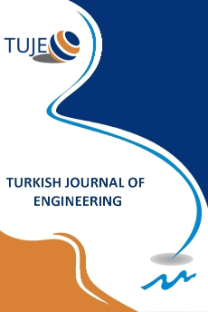ANALYSIS OF ANNUAL ENERGY REQUIREMENT OF A RESIDENTIAL HOUSE WITH TS825 AND ASHRAE HEAT BALANCE METHODS
ANALYSIS OF ANNUAL ENERGY REQUIREMENT OF A RESIDENTIAL HOUSE WITH TS825 AND ASHRAE HEAT BALANCE METHODS
Energy efficiency in buildings is an important up-to-date topic. For that reason, accurate calculation of heating and cooling loads is essential. In this study, heating and cooling loads of a residential house were determined by using national standards for different climatic zones Mersin, İstanbul, Ankara, Erzincan, and Erzurum. Calculations were performed by using the TS825 method that is based on national mandatory heat insulation standard TS825 and EnergyPlus software that is based on heat balance method. Heating loads obtained from simulations were compared on the monthly and annual basis. The absolute deviation between methods results was obtained in the range of 1.9 % to 39.5 %. The highest deviation was in Mersin where represents the 1st region and the lowest deviation was in Ankara where represents the 3rd region. Since TS825 method has not feature to simulate cooling load, annual cooling load calculated by using EnergyPlus software was 128.2 kWh/m2y for Mersin, 70.7 kWh/m2y for Istanbul, 44.9 kWh/m2y for Ankara, 49.0 kWh/m2y for Erzincan and 26.7 kWh/m2y for Erzurum. Insufficiency of the TS825 method was examined in detail.
Keywords:
Heating Load, Cooling Load, TS825 Heat Balance Method, EnergyPlus,
___
- ASHRAE Guideline 14 (2014). Measurement of energy, demand, and water savings, American Society of Heating, Ventilating, and Air Conditioning Engineers, Atlanta, GA, USA.
- Harish V. S. K. V. and Kumar, A. (2016). “A review on modeling and simulation of building energy systems.” Renewable Sustainable Energy Reviews, Vol. 56, pp. 1272-92. doi:10.1016/j.rser.2015.12.040.
- Keskin, T. (2010). Binalar sektörü mevcut durum değerlendirmesi raporu. http://iklim.cob.gov.tr/iklim/Files/Enerji_Sektoru_Mevcut_Durum_Degerlendirmesi_Raporu.pdf [Accessed 27.05.2017].
- Kürekçi A., Bardakçı, A. T., Çubuk, H. and Emanet, Ö. (2012) “Türkiye’nin tüm illeri için optimum yalıtım kalınlığının belirlenmesi.” Tesisat Mühendisliği Dergisi, Vol. 131, pp. 5-21.
- Özkan, D. B., Onan, C. and Erdem, S. (2009). “Effect of insulation material thickness on thermal insulation.” Sigma - Journal of Engineering and Natural Sciences, Vol. 27, pp. 190-196.
- Perez-Lombard, L., Ortiz, J. and Pout, C. (2008). “A review on buildings energy consumption information.” Energy and Buildings, Vol. 40, No. 3, pp. 394–398.
- Stadler, M., Firestone, R., Curtil, D. and Marnay, C. (2006). “On-site generation simulation with EnergyPlus for commercial buildings.” ACEEE Summer Study on Energy Efficiency in Buildings, pp. 242-254.
- The Republic of Turkey, Ministry of Energy and Natural Resources, http://www.eigm.gov.tr/tr-TR/DengeTablolari/Denge-Tablolari [Accessed 28.02.2016].
- The Republic of Turkey, Ministry of Energy and Natural Resources, http://www.eie.gov.tr/ [Accessed 08.03.2016].
- TS EN ISO 14683 (2009). Thermal bridges in building construction-linear thermal transmittance-simplified method and default values, Turkish Standard Institution, Ankara, Turkey.
- TS 825 (2013). Thermal insulation requirements for buildings, Turkish Standards Institution, Ankara, Turkey.
- U.S. Department of Energy, http://www.energy.gov/, Washington, USA, [Accessed 23.05.2017].
- Walton G. N. (1983). “Thermal Analysis Research Program Reference Manual”. National Bureau of Standards.
- ISSN: 2587-1366
- Yayın Aralığı: Yılda 4 Sayı
- Başlangıç: 2017
- Yayıncı: Mersin Uüniversitesi
Sayıdaki Diğer Makaleler
CARBONATION RESISTANCE OF SLAG MORTARS ACTIVATED BY DIFFERENT ALKALI ACTIVATORS
TREATMENT OF BIODIESEL WASTEWATER USING YELLOW MUSTARD SEEDS
Bahadır K. Körbahti, Mustafa Ceyhun Erdem
Berat Baris BULDUM, Suleyman Cinar CAGAN
